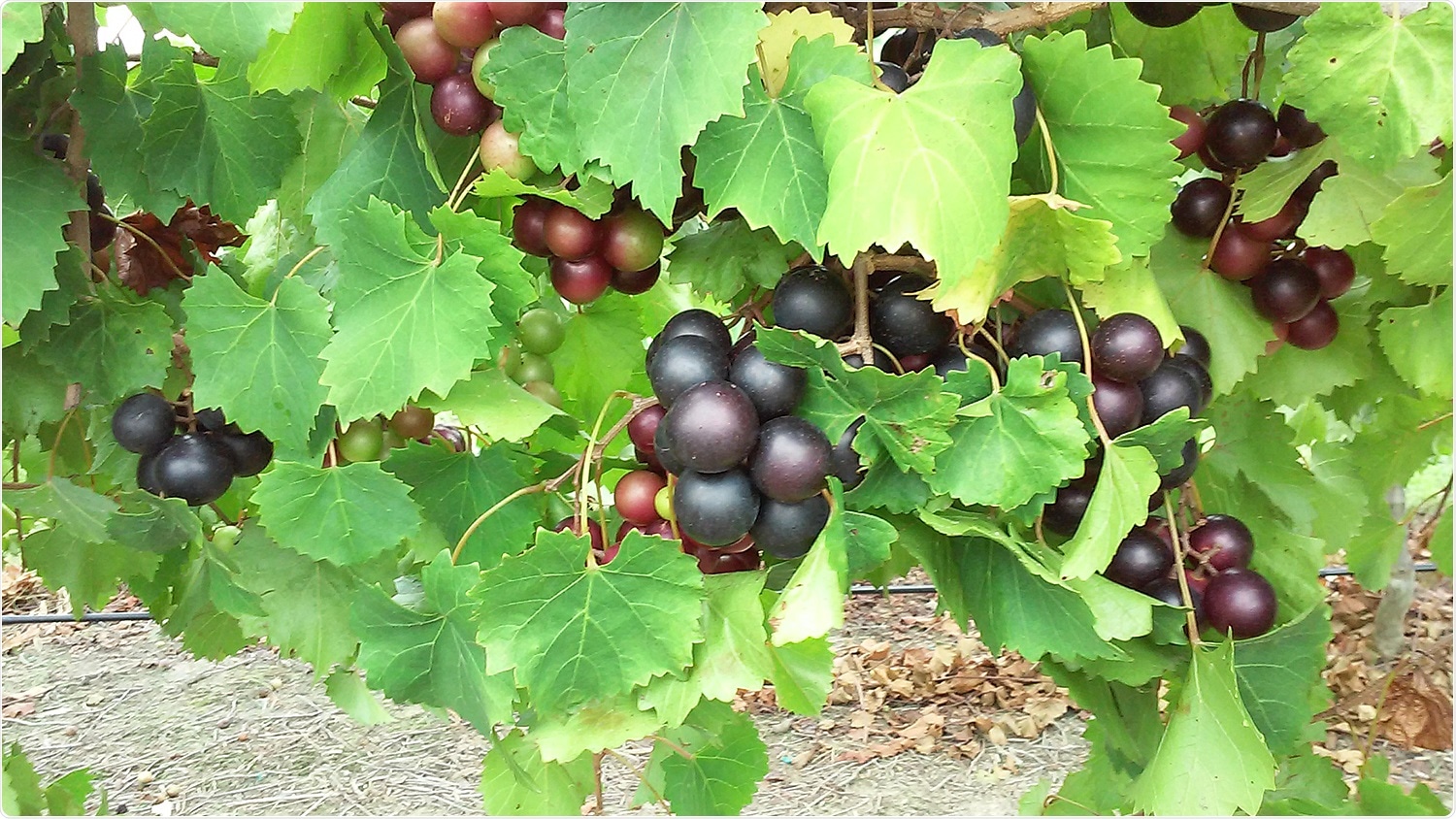According to a new study performed by plant biologists from North Carolina State University (NC State), chemical compounds found in beverages or foods, such as muscadine grapes, green tea, and dark chocolate, can attach to and inhibit the function of a specific enzyme, or protease, in the SARS-CoV-2 virus.

Chemical compounds in muscadine grapes effectively inhibit an important SARS-CoV-2 protease. Image Credit: De-Yu Xie, North Carolina State University.
De-Yu Xie, professor of plant and microbial biology at NC State and the study’s corresponding author, stated that proteases are essential to the health and viability of viruses and cells. If proteases are blocked, cells cannot carry out several major functions—like replication, for instance.
One of our lab’s focuses is to find nutraceuticals in food or medicinal plants that inhibit either how a virus attaches to human cells or the propagation of a virus in human cells.”
De-Yu Xie, Study Corresponding Author and Professor of Plant and Microbial Biology, North Carolina State University
In this analysis, the researchers from NC State conducted both laboratory studies and computer simulations and demonstrated how the supposed “main protease” (Mpro) in the SARS-CoV-2 virus responded when confronted with many different plant chemical compounds, which are already known for their powerful antioxidant and anti-inflammatory properties.
Xie continued, “Mpro in SARS-CoV-2 is required for the virus to replicate and assemble itself. If we can inhibit or deactivate this protease, the virus will die.”
Computer simulations also demonstrated that the analyzed chemical compounds from green tea, dark chocolate, cacao powder, and two varieties of muscadine grapes could attach to different parts of Mpro.
Mpro has a portion that is like a ‘pocket’ that was ‘filled’ by the chemical compounds, when this pocket was filled; the protease lost its important function.”
De-Yu Xie, Study Corresponding Author and Professor of Plant and Microbial Biology, North Carolina State University
Yue Zhu, an NC State PhD student in Xie’s laboratory, completed in vitro laboratory experiments and demonstrated similar outcomes. The chemical compounds present in muscadine grapes and green tea were quite effective at blocking the function of Mpro; chemical compounds in dark chocolate and cacao powder also decreased the Mpro activity by around 50%.
Green tea has five tested chemical compounds that bind to different sites in the pocket on Mpro, essentially overwhelming it to inhibit its function. Muscadine grapes contain these inhibitory chemicals in their skins and seeds. Plants use these compounds to protect themselves, so it is not surprising that plant leaves and skins contain these beneficial compounds.”
De-Yu Xie, Study Corresponding Author and Professor of Plant and Microbial Biology, North Carolina State University
Source:
Journal reference:
Zhu, Y & Xie, D-Y (2020) Docking Characterization and in vitro Inhibitory Activity of Flavan-3-ols and Dimeric Proanthocyanidins Against the Main Protease Activity of SARS-Cov-2. Frontiers in Plant Science. doi.org/10.3389/fpls.2020.601316.